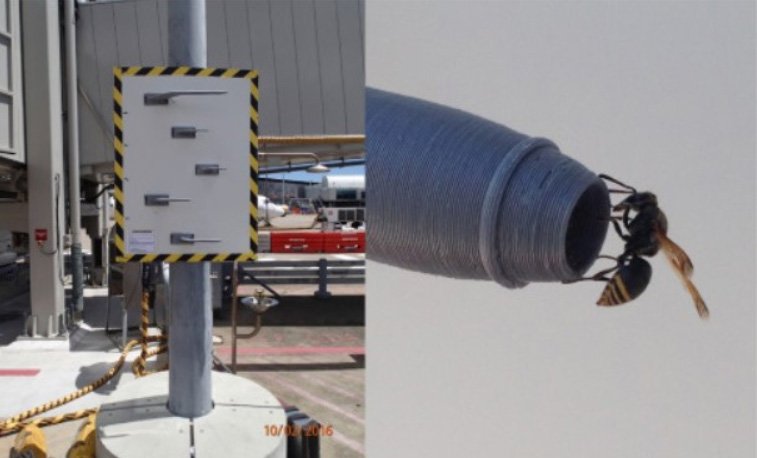Pachodynerus nasidens (Hymenoptera: Vespid)
By Alan P.N. House, Jackson G. Ring, Matthew J. Hill, Phillip P. Shaw
While birds and other vertebrates are well-known hazards to aviation at airports, the threat posed by invertebrates is less well understood.
Highlights
- Potentially catastrophic threat to aircraft from the introduced keyhole wasp
- Nesting in pitot probes leads to airspeed anomalies and serious flight hazards
- Risk modelling shows simple management measures can reduce risk to acceptable levels
- Costs of not managing the problem far outweigh those of partial acceptance of risk
- Potential for eradication, or at least long-term containment.
Abstract
While birds and other vertebrates are well-known hazards to aviation at airports, the threat posed by invertebrates is less well understood. Here we present an example of a serious risk to flight safety from the mud-nesting keyhole wasp (Pachodynerus nasidens) which views aircraft pitot probes as an attractive nesting opportunity at Brisbane Airport. Pitot probes measure airspeed, and obstructions can render measurements inaccurate, leading to serious and potentially catastrophic consequences. We undertook experiments over 39 months to determine rates of nesting in pitot probes and the associated risk of blocked probes. We also examined how this risk was reduced by covering probes. A bow-tie risk analysis was completed to assess the safety, reputation, one-off financial loss, and injury and illness costs of a range of incidents of increasing severity, and climate modelling was used to show the potential spread of the keyhole wasp in Australia. The reduction in risk from covering 33% to 75% of all probes on arrival is substantial, and made more significant when the costs of incidents are set against those of wasp management. The prospects for eradicating the keyhole wasp and the prospect of it spreading to other parts of Australia with suitable climatic conditions are discussed in view of the substantial risk the species presents.
The full paper can be found on ‘ScienceDirect’.

